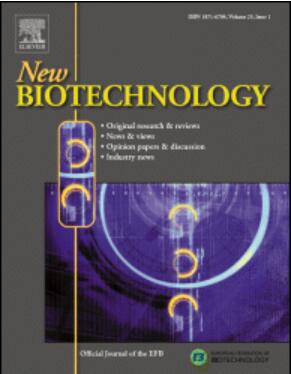Systematic identification of genomic hotspots for high-yield protein production in CHO cells
IF 4.9
2区 生物学
Q1 BIOCHEMICAL RESEARCH METHODS
引用次数: 0
Abstract
The efficient and stable production of therapeutic proteins in Chinese hamster ovary (CHO) cells hinges on robust cell line development (CLD). Traditional methods relying on random transgene integration often result in clonal variability, requiring extensive and resource-intensive screening. To address this limitation, we established a systematic, multiomics-driven framework that integrates 202 RNA-sequencing datasets and whole-genome sequencing data to identify genomic “hotspot” loci for precise and high-yield transgene integration. From an initial pool of 20 candidate loci, 5 top-performing hotspots were validated using site-specific integration in CHO-DG44 cells via the CRISPR/Cas9 system with Recombinase-mediated cassette exchange (RMCE). These genomic hotspots achieved 2.2- to 15.0-fold higher relative specific productivity compared to previously known controls (Fer1L4 and Locus1 sites), across multiple therapeutic proteins, including a lysosomal storage disorder-related enzyme and an Immunoglobulin G (IgG)-related monoclonal antibody (mAb) expression. This study offers a transformative approach to CLD, achieving significant improvements in productivity, genomic stability, and efficiency, as well as paving the way for enhanced biopharmaceutical manufacturing.
CHO细胞高产蛋白生产基因组热点的系统鉴定
中国仓鼠卵巢(CHO)细胞高效、稳定地产生治疗性蛋白依赖于细胞系发育(CLD)。依赖于随机转基因整合的传统方法往往导致克隆变异,需要广泛和资源密集的筛选。为了解决这一限制,我们建立了一个系统的、多组学驱动的框架,该框架集成了202个rna测序数据集和全基因组测序数据,以确定基因组“热点”位点,用于精确和高产的转基因整合。从最初的20个候选基因座中,通过CRISPR/Cas9系统与重组酶介导的盒式交换(RMCE)在CHO-DG44细胞中进行位点特异性整合,验证了5个表现最佳的热点。与之前已知的对照(Fer1L4和Locus1位点)相比,这些基因组热点在多种治疗性蛋白(包括溶酶体储存障碍相关酶和免疫球蛋白G (IgG)相关单克隆抗体(mAb)表达)上的相对特异性生产力提高了2.2至15.0倍。这项研究为CLD提供了一种变革性的方法,在生产力、基因组稳定性和效率方面取得了显著的进步,并为增强生物制药制造铺平了道路。
本文章由计算机程序翻译,如有差异,请以英文原文为准。
求助全文
约1分钟内获得全文
求助全文
来源期刊

New biotechnology
生物-生化研究方法
CiteScore
11.40
自引率
1.90%
发文量
77
审稿时长
1 months
期刊介绍:
New Biotechnology is the official journal of the European Federation of Biotechnology (EFB) and is published bimonthly. It covers both the science of biotechnology and its surrounding political, business and financial milieu. The journal publishes peer-reviewed basic research papers, authoritative reviews, feature articles and opinions in all areas of biotechnology. It reflects the full diversity of current biotechnology science, particularly those advances in research and practice that open opportunities for exploitation of knowledge, commercially or otherwise, together with news, discussion and comment on broader issues of general interest and concern. The outlook is fully international.
The scope of the journal includes the research, industrial and commercial aspects of biotechnology, in areas such as: Healthcare and Pharmaceuticals; Food and Agriculture; Biofuels; Genetic Engineering and Molecular Biology; Genomics and Synthetic Biology; Nanotechnology; Environment and Biodiversity; Biocatalysis; Bioremediation; Process engineering.
 求助内容:
求助内容: 应助结果提醒方式:
应助结果提醒方式:


